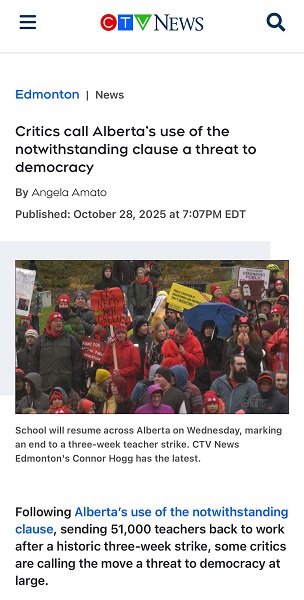Alberta
Alberta ramps up vaccine rollout

Alberta’s government will bring in four new measures starting immediately to ramp-up the COVID-19 vaccine rollout as infections and hospitalizations rise.
The new measures will mean about 500,000 more Albertans will be eligible to be vaccinated starting April 7.
“We are in a race between the vaccines and variants, and finally doses are arriving in significant numbers. We will use these to aggressively expand our rollout, speeding up the timelines and expanding the ways that we get the doses to Albertans. We will meet or surpass our promise to offer every adult a first dose by June 30.”
“Our health officials are working hard to make new shipments of vaccine available to Albertans as soon as they arrive. I strongly urge Albertans to get immunized as soon as they are eligible. When it’s your turn, please sign up for your shot, show up for your appointment and follow up for your second dose.”
Opening bookings to everyone in Phase 2B
Starting April 7 at 8 a.m., anyone born in 2005 or earlier with eligible underlying health conditions can book appointments for the COVID-19 vaccine at participating pharmacies or with Alberta Health Services (AHS) online or by calling 811.
Those currently eligible under Phase 2B are Albertans with underlying health conditions born in or before 1973. This amounts to about 150,000 Albertans. By expanding to those born in 2005 or before, 500,000 more Albertans will be eligible.
Information on eligible health conditions, including examples, is available at alberta.ca/vaccine.
AstraZeneca vaccine available for Albertans 55+
Albertans aged 55 to 64 who do not have a chronic health condition can now make an appointment to receive the AstraZeneca vaccine.
Effective immediately, anyone born between 1957 and 1966 can book appointments at participating pharmacies across the province. AHS will also begin booking appointments starting on Monday, April 12.
The AstraZeneca vaccine is safe and effective at reducing severe illness from COVID-19. The rare blood clots reported in Europe have not been reported in Canada, and risk of COVID-19 infection is far greater than any vaccine risk.
Based on current evidence, Albertans who are 55 and older who are diagnosed with COVID-19 are at least 10 times more likely to be admitted to the intensive care unit from COVID-19, and at least 45 times more likely to need hospital treatment for COVID-19, than they are to experience any form of the rare, treatable blood clots reported in Europe.
Eligible Albertans in this phase can choose to wait to receive a Pfizer or Moderna vaccine to be available to them when Phase 2D opens in May.
Rapid flow clinics
Bookings for rapid flow clinics in Grand Prairie, Fort McMurray, Red Deer, Lethbridge and Medicine Hat will open on Friday, April 9. More clinics will open in Edmonton and Calgary next week.
Bookings can be made with Alberta Health Services (AHS) online or by calling 811.
Pharmacy walk-ins
Alberta will soon expand its vaccine rollout at participating pharmacies to allow walk-in bookings, rather than those by appointment only. Additional information will be shared when pharmacy walk-ins become available next week.
Alberta’s government is responding to the COVID-19 pandemic by protecting lives and livelihoods with precise measures to bend the curve, sustain small businesses and protect Alberta’s health-care system.
Alberta
Province orders School Boards to gather data on class sizes and complexity by Nov 24

Better data, better outcomes for Alberta students |
To help schools address classroom complexity, Alberta’s government will begin collecting annual data on class size and composition.
Over the past three years, Alberta has welcomed more than 80,000 new students. With this unprecedented growth, classroom complexity and class sizes are among the biggest issues facing schools and teachers across the province.
To meet this challenge head on, Alberta’s government will work with school boards to gather yearly data on class sizes and composition. This information will be used to better understand staffing, student needs and classroom complexity. School boards will be required to submit data on Alberta classrooms by Nov. 24, and by January, this data will be made publicly available and will then be released annually.
Data collected on classroom complexity will help the province understand and address issues in schools, including class sizes, and support strategic investments in classrooms. Over the next three years, school boards will be provided with funding to hire 3,000 teachers and 1,500 new education assistants to support students with complex needs.
“We are ready to work with school boards and teachers to address classroom complexity and class sizes. We have heard them loud and clear and we are taking bold action to address these issues.”
Alberta’s government is establishing a Class Size and Complexity Task Force to begin work immediately on identifying solutions to the challenges facing Alberta classrooms. Alongside new annual data collection, the task force will ensure every student gets the attention and support they need to succeed. Details about the task force will be shared in the coming weeks.
“This data will provide essential insight into classroom realities, guiding evidence-based decisions and advocating for sustainable funding to address complexity, ensuring every student and educator in Alberta has the support to thrive.”
Quick facts
To inform decisions on addressing classroom complexity, data will be collected on total numbers of:
- all staff, per school, including roles
- substitute teachers
- district staff, listed by job title
- students, per classroom, per school
- severe, mild/moderate, and gifted/talented students, per classroom, per school
- English as an additional language (EAL) students, per classroom, per school
- refugee students, per classroom, per school
- First Nations, Métis and Inuit students, per classroom, per school
- Individualized Program Plans, per classroom, per school
- students waitlisted for assessment, per classroom, per school
- incidents of aggression and violence
- $55 million was provided in Budget 2025 to address classroom complexity.
- 8.6 billion is being invested to build and renovate more than 130 schools across the province.
- Budget 2025 is investing $1.6 billion in learning support funding to help meet students’ specialized learning needs.
- Budget 2025 is investing $1.1 billion to hire more than 4,000 teachers and educational staff.
Alberta
How one major media torqued its coverage – in the take no prisoners words of a former Alberta premier

(Editor’s note: I was going to write on the media’s handling of the Alberta government’s decision to order striking teachers back to work and invoke Section 33 of the Charter in doing so. But former Alberta premier Jason Kenney provided such a fulsome dissection of an absence of balance and its consequences in terms of public trust on X that I asked him if The Rewrite could publish it. He said yes and here it is – Peter Menzies.)
By Jason Kenney
This ”story” is an object lesson for why trust in legacy media has plummeted, and alt right media audiences have grown.
”story” is an object lesson for why trust in legacy media has plummeted, and alt right media audiences have grown.
Here CTV “digital news producer” @AngeMAmato (she/her) writes a story about “experts” calling the use of Sec. 33 “a threat to democracy.”
Who are the experts?
A left wing academic, and a left wing activist. The latter, Howard Sapers, is a former Liberal MLA (which the article does not mention) for a party that is so marginal, it has not elected an MLA in over a decade.
For good measure CTV goes on to quote two left wing union bosses, who of course are predictably outraged.
A more accurate headline would be “Four people on the left angry about use of Notwithstanding Clause.” Which is the opposite of news. It’s the ultimate “Dog Bites Man” non-story.
Did the CTV producer make any effort to post a balanced story by asking for comment from academics / lawyers / think tanks who support use of Sec. 33? Did she call the @CDNConstFound or the @MLInstitute’s Judicial Power Project? Did she attempt to reach any of these four scholars, who just published their views in a @nationalpost op-ed last week?
Did she have an editor who asked why her story lacked any attempt at balance?
And did anyone at CTV pause for a moment to ponder how tendentious it is to accuse a democratically elected legislature of acting “undemocratically” by invoking a power whose entire purpose is to ensure democratic accountability?
She provides some historical context about prior use of Sec. 33. Why does that context not include the fact that most democratically elected provincial governments (including Alberta under Premier Lougheed, and Saskatchewan under NDP Premier Blakeney) agreed to adopt the Charter *only if* it included the Notwithstanding Clause to allow democratically elected Legislatures to ensure a democratic check and balance against the abuse of undemocratic, unaccountable judicial power?
Why does she not mention that for the first 33 years of the Charter era, the Canadian Courts ruled that there was no constitutionally protected right to strike?
Why doesn’t she quote an expert pointing out that Allan Blakeney defended the Saskatchewan Legislature’s 1986 use of Sec. 33 to end a strike as “a legitimate use of the Clause?” Or refer to Peter Lougheed’s 1987 commitment to use Sec. 33 if the courts invented a right to strike?
Many thoughtful criticisms can be levelled against Section 33. Being undemocratic is not one of them.
So why do we see so much agitprop like this masquerading as news from so many legacy media outlets?
IMO, there are two possible answers:
1) They are blind to their own biases; and / or
2) People like @AngeMAmato believe that they have a moral imperative to be “progressive journalists” which trumps the boringly old fashioned professional imperative to be objective and balanced.
Whatever the reason, “journalists” like this have no one to blame but themselves for growing distrust of legacy media, and the consequent emergence of non traditional media platforms.
 |
|
Invite your friends and earn rewards
-

 Business2 days ago
Business2 days agoCanada heading into economic turbulence: The USMCA is finished and Canadian elbows may have started the real fight
-

 Internet2 days ago
Internet2 days agoMusk launches Grokipedia to break Wikipedia’s information monopoly
-

 Business2 days ago
Business2 days agoBill Gates walks away from the climate cult
-

 National1 day ago
National1 day agoCanada’s NDP is now calling women ‘non-males’
-

 National1 day ago
National1 day agoCanadian MPs order ethics investigation into Mark Carney’s corporate interests
-

 Business2 days ago
Business2 days agoFord’s Liquor War Trades Economic Freedom For Political Theatre
-

 Banks2 days ago
Banks2 days agoBank of Canada Cuts Rates to 2.25%, Warns of Structural Economic Damage
-

 Health2 days ago
Health2 days agoLeslyn Lewis urges Canadians to fight WHO pandemic treaty before it’s legally binding








